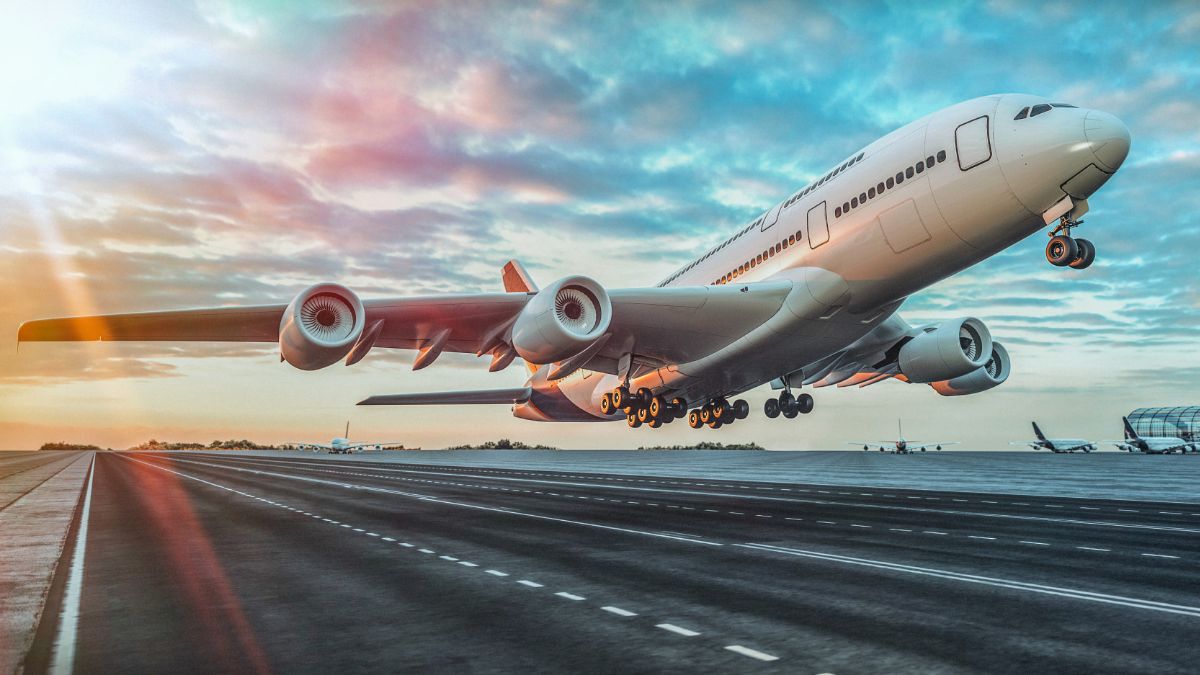
Modern aviation technology is one of the defining features of our present-day society. It has allowed us to explore new worlds, transport goods and supplies on a global scale, and share information like never before – all while ensuring our safety with advanced capabilities. But have you ever stopped to wonder what goes into making sure that any given aircraft functions properly? What processes must be in place for passengers (or cargo) to reach their destination without issue? Having an understanding of key components involved in the engineering of modern aviation technology isn’t only interesting – it’s also necessary if we wish to continue flying safely while exploring faraway places.
This blog post will dive into this topic by providing an overview of important workflow steps as well as potential best practices related to them. From there, we’ll go in into detail about how crucial specialized knowledge is when handling different aspects of aerospace engineering, from systems design and onboard equipment types through airworthiness certification process management. So if you are ready to understand why modern aviation technology is so essential, read on!
Understanding Modern Aviation Technology – What It Is and Why We Need It
Modern aviation technology is revolutionizing the way we travel. From improving flight safety and enhancing air traffic control systems to making air travel faster and more efficient, understanding modern aviation technology is essential to ensuring our safety and convenience when taking to the skies. As technological advancements continue to be made, knowledge about how these systems work becomes increasingly important for all travelers. Not only does it allow us to remain informed on new regulations, laws, and protocols, but it also ensures that everyone can operate safely in the sky. Understanding modern aviation technology is key to taking advantage of the many benefits this technology provides and making sure our journeys are as smooth as possible. And while aircraft vary in size and capabilities, the basic components and principles of aviation technology remain the same — no matter how sophisticated the aircraft may be.
Key Components of Modern Aviation Technology Explained
New technology advancements in the field of aviation have drastically changed the way we travel. With so many modern aircraft now relying on increasingly complex systems, understanding the various key components is essential for pilots and aviation engineers alike. From sensors and digital displays to navigation and communication systems, modern aviation technologies are being used to make traveling even faster, safer, and more efficient. Here’s a closer look into the different components of modern aviation technology:
- Systems Design – Aircraft systems need to be designed with precision and efficiency in mind, accounting for the needs of both crew and passengers. This includes creating optimized flight decks, navigation systems, communication devices, and other equipment that can be used to monitor and control the aircraft.
- Onboard Equipment – The type of onboard equipment used on an aircraft is determined by its size and capabilities. Smaller airplanes may rely on basic GPS navigation while larger aircraft require more sophisticated avionics systems. In addition, modern aircraft also contain sensors and digital display systems that monitor the performance of the aircraft and provide real-time updates.
- Airworthiness Certification Process Management – FAA regulations dictate that all aircraft must go through a rigorous airworthiness certification process before they can be operated safely in the sky. From aircraft engine overhauls to manual inspections, aviation engineers must make sure that all aircraft are certified according to stringent quality regulations. Pilots must have a full understanding of each component included in this process.
- Pilot Training and Education – With the increasing complexity of modern aviation technology, pilots need to have a thorough understanding of all aircraft systems and components. This requires a well-rounded education, with courses covering aerodynamics, mathematics, navigation, and aircraft maintenance. Ongoing training is also necessary to stay up-to-date on technological advancements and remain compliant with FAA regulations.
Benefits of Understanding Modern Aviation Technology
Understanding modern aviation technology has significant benefits for the aviation industry. It can help enable swift and safe operations, improving safety protocols and enabling more efficient transportation services. Additionally, a working knowledge of modern aviation technology enables better industry collaboration that can lead to cost savings for airlines, airports, and logistics providers. Pilots who understand how different components interact with each other are also better equipped to avoid issues or respond quickly to them if they occur. An understanding of technology in the aviation space is an essential skill set as companies work to modernize their operations. Overall, having an in-depth knowledge of this form of technology is an asset that yields various advantages ranging from cost savings to improved safety standards.
The Impact of Automation and Artificial Intelligence on the Industry
Automation and Artificial Intelligence (AI) has made a remarkable, positive impact on the aviation industry. AI-powered aircraft now utilize fewer avionics components, allowing for streamlined systems that reduce errors and can optimize fuel efficiency. Pilots also benefit from this technology with automated warnings communicating potential dangers, as well as additional features such as autopilot functions improving situational awareness in the cockpit. Air traffic controllers use automation to interpret patterns, which enables them to direct flights more efficiently.
Artificial Intelligence is even used to predict aircraft maintenance needs so repairs can be done proactively rather than reactively, resulting in increased safety performance. Ultimately, these advancements are proof that the aviation industry is reaping the rewards of modern technology and putting appropriate safeguards in place to ensure everyone involved experiences positive results while maintaining high levels of safety.
Preparing for the Future of Aviation Technology
Preparing for the future of aviation technology requires a firm foundational understanding of the technology used today. This includes having an appreciation for the key components involved in modern aviation technology, such as safety enhancements and digital tools. Knowing how to use these pieces of technology will be an increasingly important factor for all those affected by aviation, from passengers to engineers to regulatory bodies. Our current state of knowledge is only going to help us develop more advanced and useful systems in the coming years—but we must prepare ourselves now before encountering these new, unseen challenges. By being mindful of the existing components and staying up-to-date on research and development, we can be better prepared to face the changes ahead.
Takeaways – How to Get Started With Your Knowledge in This Field
If you want to get started in understanding key components of modern aviation technology, there are several key takeaways that you should begin with. First, it’s essential to have a realistic grasp of exactly the technology and hardware that are used in current aviation systems. Without an understanding of the basic building blocks of this system, you will have difficulty even beginning to comprehend more comprehensive aspects such as navigation or troubleshooting. Additionally, seeking out resources from established experts is also remarkably important; through interacting with people experienced in the field, your base knowledge can be widened and sharpened. For anyone looking to become proficient in this field, taking steps like these would be invaluable investments in their education and success.
In conclusion, the world of modern aviation technology has continued to revolutionize the way we travel. The embracement of automation and artificial intelligence has allowed us to travel safely and securely at much faster speeds than before. By understanding the key components of this technology, as well as its many benefits, we can be ready for the changes it will bring to our industry. We have just scratched the surface of what this technology can do today – from reducing workloads to improving accuracy in-flight navigation – and staying on top of new advancements is key to success. Knowing how to take advantage of this exciting world of modern aviation technologies will help put you in a favorable competitive position so that you stay ahead of the game.




